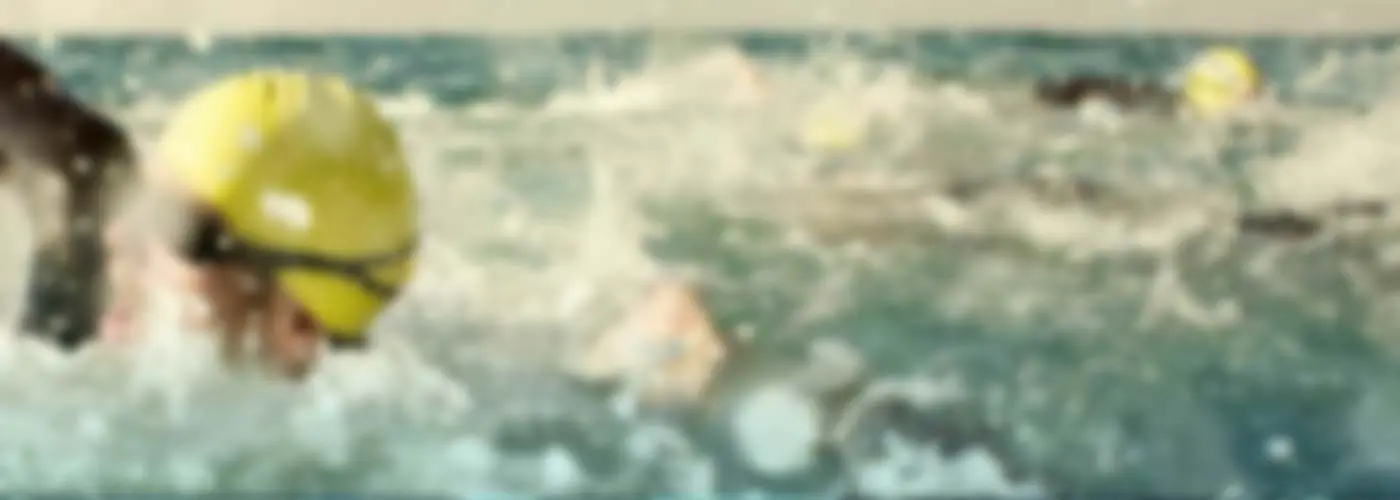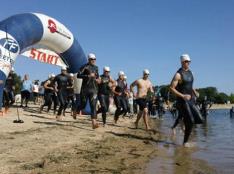You can get away with a lack of training in a short race. That won't work when the distance is doubled.
Start Earlier
1 of 9
The No. 1 rule when moving from a sprint to Olympic-distance triathlon is to give yourself enough training time.
"Leave yourself 12 to 16 weeks to adequately train," says Elizabeth Waterstraat, triathlete and founder of Multisport Mastery (multisportmastery.com).
You need to build the stamina to be out there for three to four hours and there aren't any shortcuts for that. Leaving more time than you would for a sprint helps you build endurance without risking injury.
Find:
Your Next TriathlonVary Your Training
2 of 9
"Include endurance work, tempo work and threshold work," Waterstraat says.
Olympic distance is nothing to sneeze at, and you need a good, progressive training plan, not a train-when-you-feel-like-it plan, if you want to actually enjoy race day.
Find:
Your Next TriathlonGet Your Technique Right
3 of 9
You might be able to get away with inefficient form over a short distance, but over longer ones, it will burn you out. Find a coach to assess your swimming, biking and running form and help you become more efficient. The more efficient you are in each discipline, the more energy you'll have for the next one.
Find:
Your Next TriathlonHave a Pacing Strategy
4 of 9
You can get through a sprint by redlining it the whole time. But when the distance gets longer, you can't sustain that.
"You have to make sure you're getting the effort right," Waterstraat says.
In training, you need to figure out what pace you can sustain in each discipline—and what pace you can sustain in training that won't leave you too tired to train the next day. You're not helping your race by "binge training," going so hard one day that you can't work out for three days after that. Consistency in training allows your fitness, skills and efficiency to grow in an effective way.
Find:
Your Next TriathlonGet a Nutrition Plan
5 of 9
When you work out for more than 90 minutes, you need to be able to refuel your body on the fly, Waterstraat says.
That means figuring out what kind of nutrition your body can absorb while moving. Can you easily eat and tolerate bars and gels or do you need something different entirely? Practice it in training so your body gets used to handling those foods.
Find:
Your Next TriathlonSpend More Quality Time in the Water
6 of 9
"Make sure you can swim the whole distance in open water," Waterstraat says. "People can 'fake' a sprint or do it on minimal training, but when you're out there for almost a mile, you need to have practiced it."
Find:
Your Next TriathlonCommit to the Bike
7 of 9
If you drop your pace by a minute per mile on the run, you've saved yourself six minutes. Drop a minute per mile on the bike, and you finish 25 minutes faster. To do that, though, you need to invest time in bike training, and that's the piece many new athletes shortchange most when stepping up to Olympic-distance triathlon training.
If you can't get out and ride during the week, put in time on your indoor trainer. Just be sure to get out for the longer rides to build valuable endurance and bike handling skills.
Find:
Your Next TriathlonChoose the Right Course
8 of 9
"Choose a race that's friendly to beginners," Waterstraat says.
You're going to make some mistakes the first time out; best to make them on a beginner-friendly course and then apply what you learned to a harder course.







Discuss This Article